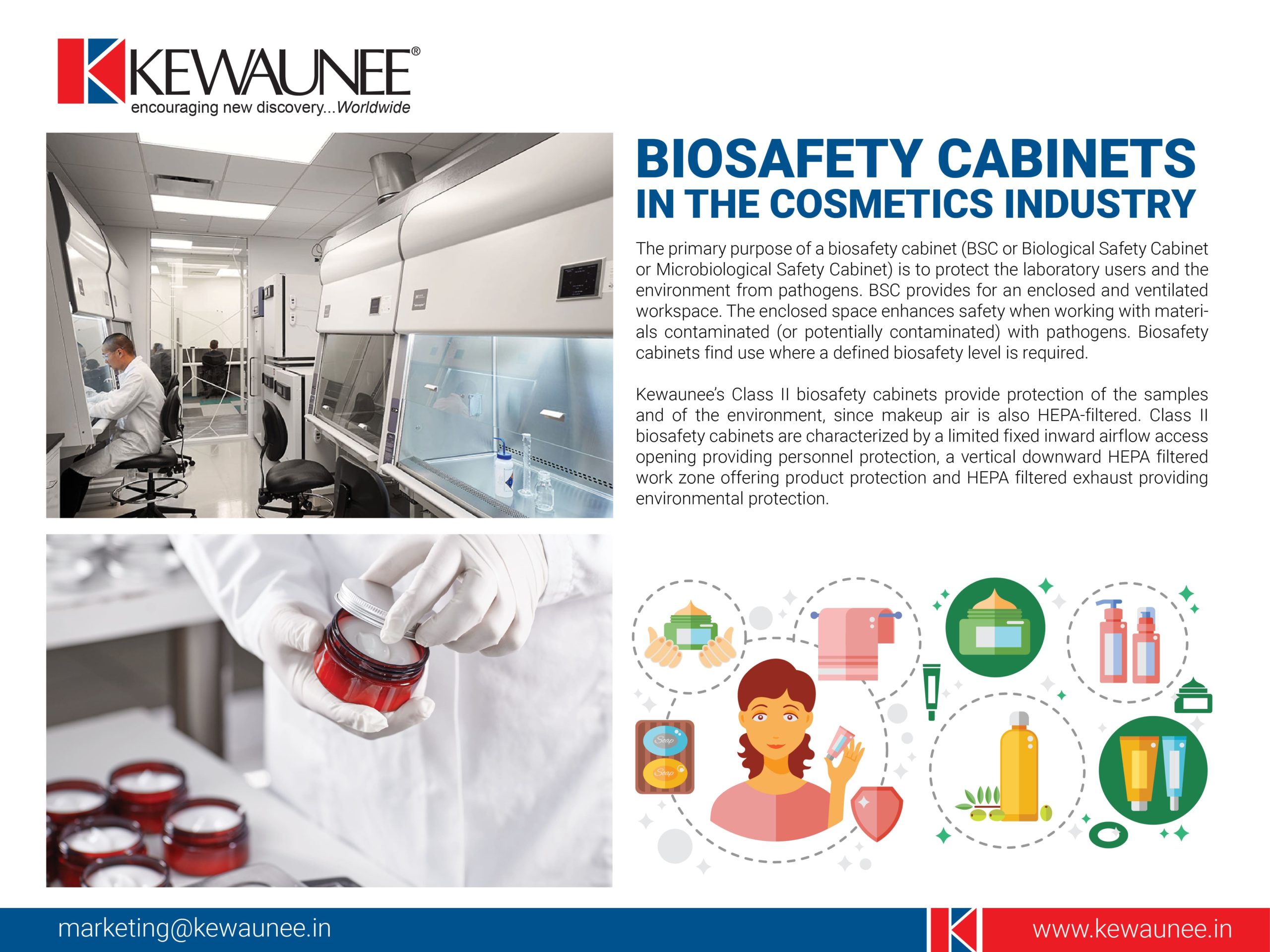Biosafety Cabinets In The Cosmetics Industry
Biosafety cabinets are specialized pieces of equipment that are used to protect both the user and the environment from potentially hazardous biological materials. They are commonly found in laboratories and research facilities, but they are also used in a variety of other industries, including the cosmetics industry.
Types of Biosafety Cabinets
There are three main types of biosafety cabinets: Class I, Class II, and Class III.
Class I cabinets provide the lowest level of protection and protect the user and the environment from contaminants that may be present in the air. They are not suitable for use with hazardous materials, but they can be used for tasks such as handling sterile culture media and other non-infectious materials.
Class II cabinets protect the user, the product, and the environment from contaminants that may be present in the air. They are equipped with a HEPA (high-efficiency particulate air) filter that removes 99.97% of particles with a size of 0.3 micrometers or larger from the air that is exhausted from the cabinet. These cabinets are suitable for use with a wide range of hazardous materials, including infectious agents, chemicals, and radioactive materials.
Class III cabinets are the most protective type of biosafety cabinet and provide the highest level of protection to the user, the product, and the environment. They are equipped with a double HEPA filter system that removes 99.999% of particles with a size of 0.3 micrometers or larger from the air that is exhausted from the cabinet. Class III cabinets are typically used for handling highly infectious or toxic materials, such as prions or the Ebola virus.
Cosmetics Industry
In the cosmetics industry, biosafety cabinets are used to protect workers from exposure to hazardous materials during the production and testing of cosmetics products. They are often used in the formulation, filling, and packaging of cosmetics products to ensure the safety and purity of the final product.
Biosafety cabinets are also used to protect the environment from hazardous materials that may be present in cosmetics products. For example, they can handle and dispose of hazardous waste materials, such as used packaging or spill cleanup materials.
There are several factors to consider when selecting a biosafety cabinet for the cosmetics industry. These include the type and level of protection needed, the size and layout of the workspace, and the specific tasks that will be performed in the cabinet.
Maintenance
Proper use and maintenance of biosafety cabinets is essential to ensure the safety of workers and the environment. This includes wearing protective clothing, such as gloves and a lab coat, and following all necessary safety procedures and guidelines. Biosafety cabinets should be regularly inspected and maintained to ensure that they are functioning properly and providing the level of protection.
In conclusion, biosafety cabinets play a critical role in the cosmetics industry by protecting workers and the environment from exposure to hazardous materials. Proper selection, use, and maintenance of these cabinets is essential to ensure the safety and purity of cosmetics products.
Comments are closed.











